After Yang (2022) Movie Ending Explained & Themes Analyzed: One of the key concepts of science-fiction is exploring universal concepts by utilizing high concept ideas. Shows such as Black Mirror or Twilight Zone utilize the science fiction concepts in picturing a world that is far more sinister under its cotton candy layers. One of the prime examples of this form of science fiction storytelling is Alex Garland’s 2015 Ex-Machina, a story exploring a programmer trying to administer the Turing test to an intelligent humanoid robot.
Kogonada’s 2022 movie After Yang is also about exploring the concept of the sentience of artificial intelligence but through a lens far more utopian with a beguiling tonality. The result is a movie with a simplistic plot but a complex emotional core tapping onto the concepts of family.
After Yang is very much a Kogonada film with its atmospheric tonality seeking almost to entrance the viewer. What is impressive in After Yang is how much depth the narrative carries within a span of 96 minutes. This article will attempt to explore most of that. Please be warned that this article is full of spoilers, so read ahead at your own discretion.
After Yang Movie Synopsis and Summary:
After Yang is a film about a family of three consisting of Jake, Kyra, their adoptive daughter Mika, and Yang, a previously owned and refurbished android who is a cultural techno-sapien – a form of android used to teach kids about their heritage.
Yang was specifically bought to teach Mika about her Chinese heritage, but their relationship has evolved into a surrogate brother and sister bond. Jake, on the other hand, is a middle-aged man passionate about tea leaves but whose shop is losing business because of his insistence on not carrying “tea-crystals” in his shop.
One of the past times of the family is participating in a virtual multiplayer dance-off competition. This dance competition creates one of the funnier and more interesting opening credits of the movie while also taking the narrative closer to the inciting incident.
One evening, as they get eliminated from the dance competition, they discover that Yang hasn’t stopped dancing and is not listening to their commands. When he finally stops dancing, he does not wake up. Mika gets upset because she fears having lost her brother, which prompts Jake to take up Yang’s repair as a personal goal.
He then discovers that Second Siblings, the company from whom he had bought Yang as a refurbished companion, has gone out of business. The parent company, Brothers and Sisters Incorporated, recommend him to replace Yang with a newer unit at a heavy discount, as its outer body would decompose otherwise.
What was Yang’s memory bank?
Jake knows that replacing Yang would hurt Mika’s already emotional state. His reluctance in replacing Yang makes him contact Russ, an unauthorized repairman, to repair and, consequently, save Yang. Russ contacts Jake after a couple of days and reveals that he has discovered a chip in Yang’s matrix, which he strongly suspects is spyware used to record our conversations and cause breaches in privacy.
The chips’ function is to record videos and audio piques Jake’s interest, and under Russ’ recommendation, Jake contacts Cleo, a specialist at the Museum of Technology. Cleo then reveals that Yang is one of the older models of techno-sapiens, ones installed with these chips called “memory banks.
They were part of an experiment to test what the techno-sapiens deemed worthy of keeping in their memory banks but were later banned from usage because of privacy issues. She tells Jake the method to access these memories and recommends he donate Yang’s body for research purposes after going through his memories because Yang is beyond repair.
Related to After Yang Movie Explained – Drive My Car Movie Explained: Ending & Themes Analyzed
What had Yang stored in his Memory Bank?
Accessing the memories via Virtual Reality headsets, Jake enters the memory bank almost built as an open forest space, with the different memories as stars in the nighttime sky. As Jake explores these memories, he encounters recurring images and video clips of a young attractive woman. Hints of romantic feelings coupled with a growing sense of sentience as a definite form of existence for Yang comes into sharp focus.
Gradually, Jake discovers memories of their family as well which, unfolding in form of montages, almost hark back to Terrance Malick’s evocative form of filmmaking. Initially, there are shorter snippets, including memories of Mika as a toddler, tracing her gradual growth. However, there are also moments of apparent mundanity, which was the cause of interest for Yang – a memory of sun rays refracting through the window, a rainy afternoon, leaves of tea swirling inside a glass of tea. Large extracts of conversation between Jake and Yang, where Jake explains to Yang how his interest in tea grew after watching a documentary (being struck by the realization of tea being able to encapsulate a location within itself) also feature in the chip. This passion of Jake’s renewed Yang’s interest in the brewing process.
There were also memories between Yang and Kyra about his butterfly collection, the existence of an afterlife, and whether or not Yang’s belief in an afterlife goes against his programming. There was also a conversation between Mika and Yang where Yang assuages her about her fear of belonging to her current family and her doubts about her parentage.
These conversations reveal Yang as a calm and sensitive individual who definitely was a sentient human being, prone to feelings of belonging and love. Jake tries to locate the girl in Yang’s memories by tracking down the coffee shop where she worked but to no avail. Conversing with his neighbors, Jake finally locates the girl who reveals, indirectly, that Yang was in a relationship with her, even though they didn’t define it that way. This leads to a moment of bonding between Jake and Ada over the shared feeling of loss – him having lost a son and her having lost a lover.
What were the secret memory clusters in Yang’s memory bank?
Jake takes Ada and Mika to the museum where Yang’s corporeal body would be put up for display. While tinkering with the memory bank, Jake discovers a locked archive (beta archive) that contained a memory clip of Yang at a house he is unfamiliar with, which makes him realize that this is the house where Yang belonged before Jake’s care.
Tracking down the house, Jake talks with the previous owner, who reveals that she too bought Yang as refurbished techno from Second Siblings. While returning home, Jake tries to extract the alpha archive (another locked archive) but fails due to insufficient space. Compressing the two other archives – the beta archive, and the gamma archive where he had stored the memories with Jake’s family, Jake finally extracts the alpha archive, which reveals Yang as a Techno Sapien who had been functioning for decades.
In these short video clips, Jake finds out that Yang had been raised as a companion to an Asian boy and, later, to his elderly mother when the boy had left. There, he had fallen in love with another caretaker hired by the son, who looks exactly like Ada. It is revealed that the woman had been in a relationship with Yang until her untimely death (quite possibly in a road accident).
Also, Read – The Innocents (2021) Movie Explained: Ending, Themes, & Subversion Of Childhood Innocence Analyzed
After Yang Movie Ending Explained:
Jake imparts all this new information to Ada, who reveals that the woman had been his great-great-aunt. Conversing while walking, Ada tells Jake that she wished Yang had just told her the truth of having known her great-great-aunt. As they walk, Jake asks her whether or not she truly wanted that, but she disappears. Jake says, “he found you”.
In a roundabout way, the movie is raising the question of Yang’s love for Ada, their existences, and, thus, a form of generational love, which doesn’t have much corporeal existence. Her disappearance is also not overly brought up, perhaps signifying its diminishing importance to the themes of family and mortality explored throughout the movie.
Later, Jake tells Kyra that he had decided to not donate Yang to a museum but to let his memories be studied because his existence mattered not limited to themselves. Mika goes to Yang’s room and speaks fluent unsubtitled mandarin. In a way, it is the director’s way of providing a sense of privacy in a conversation otherwise strictly personal between the brother and the sister.
From the tonality of it, we sense that it is a form of personal goodbye. Mika confides in Jake, saying she doesn’t want to forget Yang, to which he agrees. Mika begins to sing a song previously heard in Yang’s memories, showing the fluidity of memory traveling through generations.
After Yang Movie Themes Explained:
Mortality, Existence, and Family units:
There are two types of thematic ideologies at play in After Yang. On the one hand, we are dealing with the covert themes of mortality, existence, and family units. The movie, After Yang, briefly shows us a family which borders on either childless or a single child. The family unit is co-opted by bringing in built-in companions or techno-sapiens and adoption and, to some extent, even cloning.
The evolution of science is shown in a far more organic fashion than expected, i.e being only hinted at through dialogues. The preference of the old lady towards “tea crystals” than tea leaves, the presence of self-driven smart cars, the existence of these smart companions like Yang as a logical extension of the smart AI like Alexa are just a substrate of what Kogonada really wants to explore.
The world is leaning a bit more on the utopian side of the civilization scale, but Kogonada’s interest lies in the exploration of sci-fi concepts from a generational standpoint. The existence of memories, their purity, and the inherent tampering or flaws of memory itself are shown beautifully in the movie. Unlike the crystal clear recordings of Yang’s memory bank, Jake and Kyra’s memories aren’t properly synced – The audio sometimes moves quicker than the events occurring on-screen, and events get repeated from different angles.
Cultural diversity and Homogeneity:
After Yang also explores the age-old question of whether any artificial intelligence wants to be human, a question previously tackled by franchises like Star Trek via characters like Data. Unlike those franchises, After Yang through Ada shoots that question down with a fair rebuttal – “What’s so great about being human?”, but raises the question as to “What it meant to be Chinese?” Through that regard, Koganoda goes inwards, exploring the cultural diversity and the homogeneity which invariably is caused due to globalization.
Adoption and Sense of Belonging:
Kogonada tackles themes of adoption, belonging to a family through the concept of grafting – a process of putting a portion of a plant (bud) into the stem of another plant (stock) and then joining them together via tissue regeneration. What the film, through the character of Yang, wants to focus on is to give similar importance to both the branches – the stock as well as the scion, while acknowledging the resultant plant’s uniqueness. The presence of memory clusters dating back decades also gives context to Yang’s questions about mortality and rebirth. The existence of these archives as locked or inaccessible, and Yang being refurbished and taken in different families gives the appearance of an imperfect and incomplete form of rebirth. It could be extrapolated that Yang’s malfunction could be caused by hardware failure and the overloading of these memories or sentience overpowering the programming.
Deep-rooted Xenophobia and Racism:
The covert themes in After Yang are the more political aspects of this movie – how the evolution of humanity had not brushed off some of the flaws of the present day. The family, being very multicultural – Jake is a white, middle-aged man, Kyra is a black woman, and Mika, a young mandarin girl – is just acknowledged as the norm.
The reliance of taking on refurbished materials or analogs over real products is still present, as is the deep-rooted xenophobia and paranoia. Russ’ fear of memory bank as spyware of the government to record private conversations between individuals is as much a prevalent paranoia as is the racism subtly shown in Russ’ workshop with an American flag teasing, “There is no yellow in red, white and blue”. Without exploring its political identity, Kogonada only teases it in After Yang. Considering the number of themes it plays with, it is a small price to pay for a larger meditative thoughtful discussion.

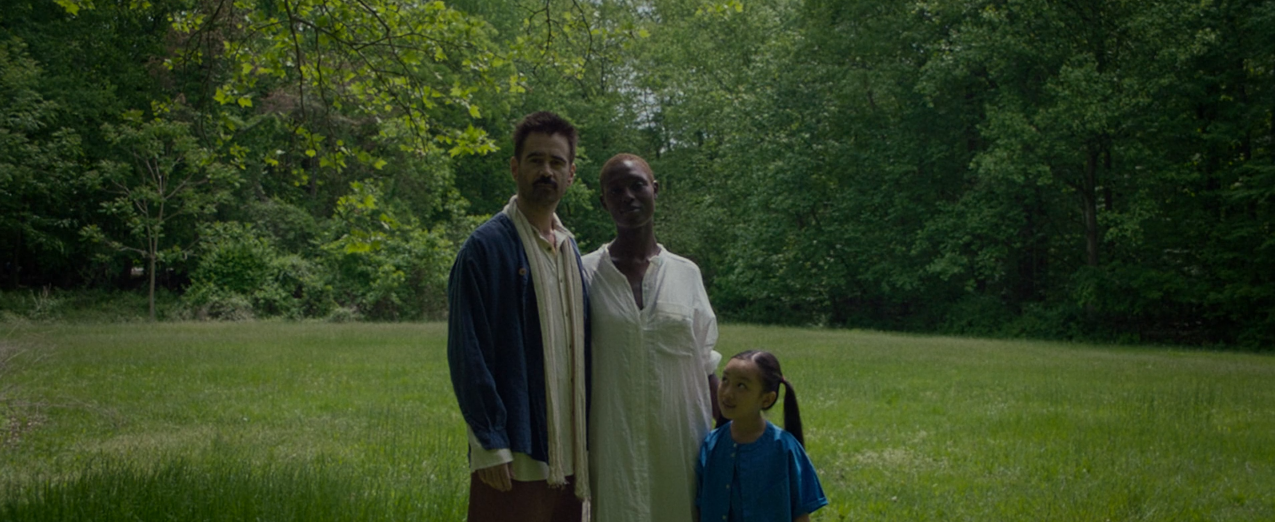
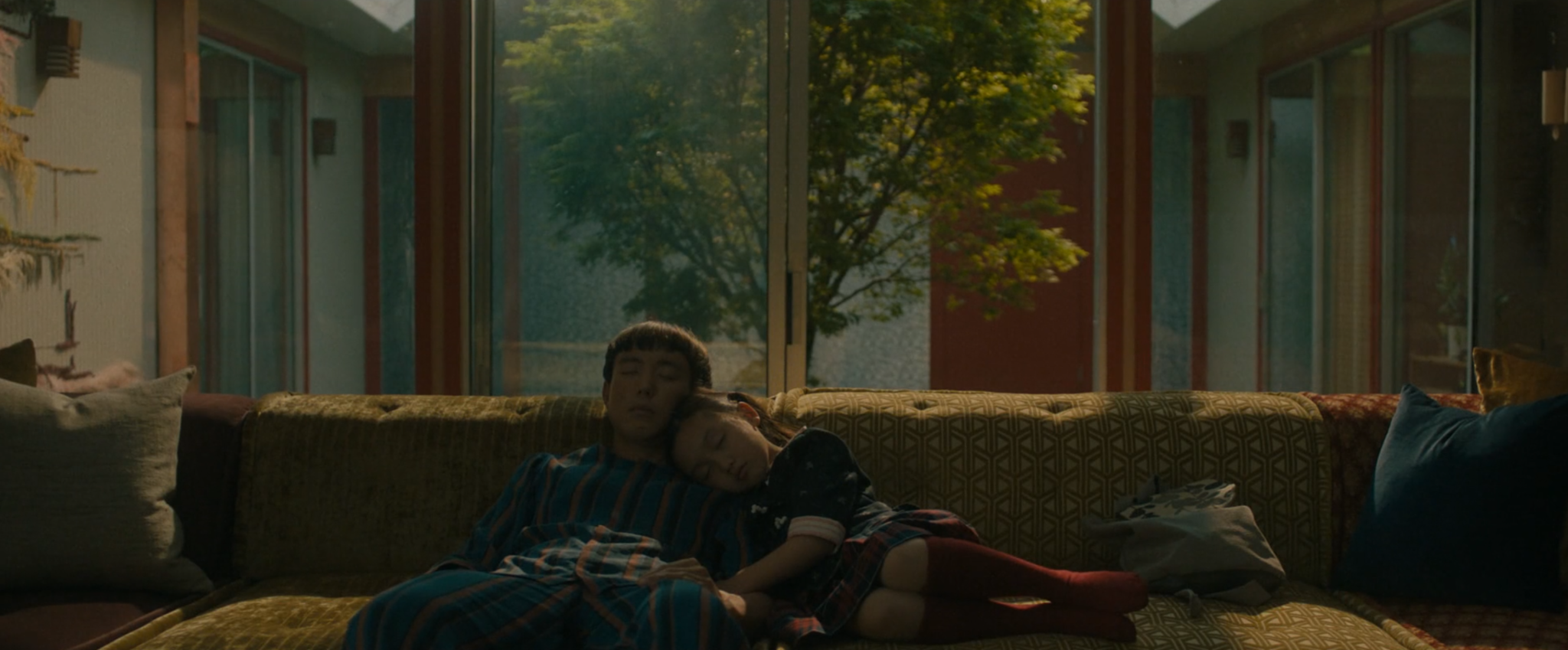
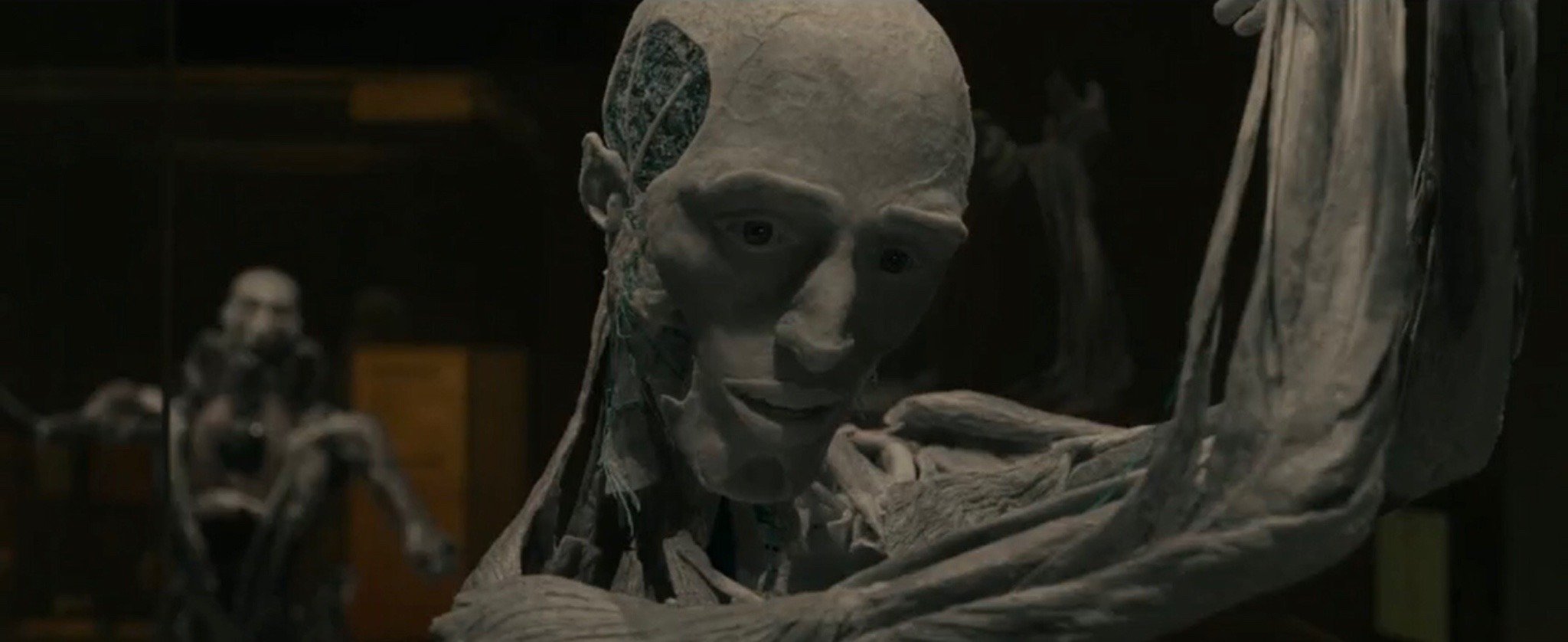





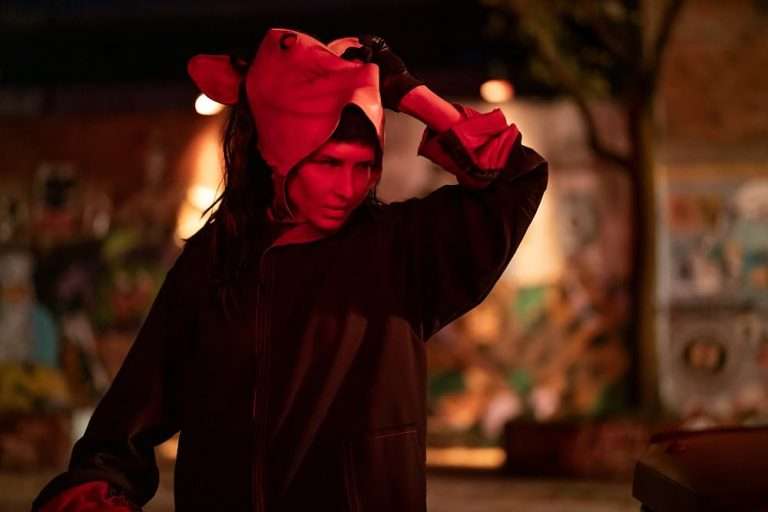
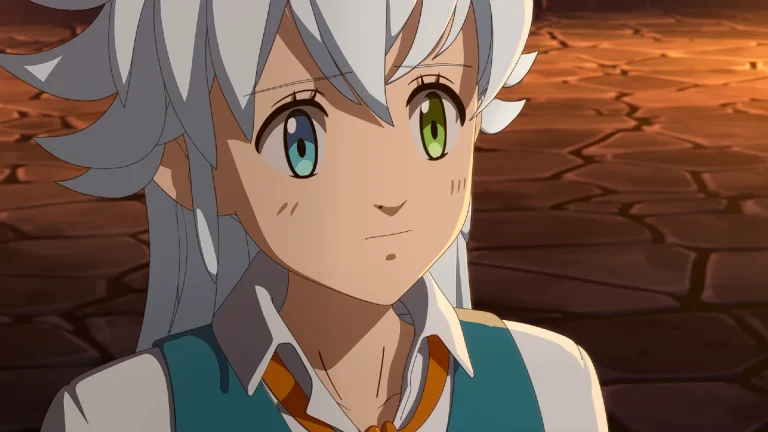
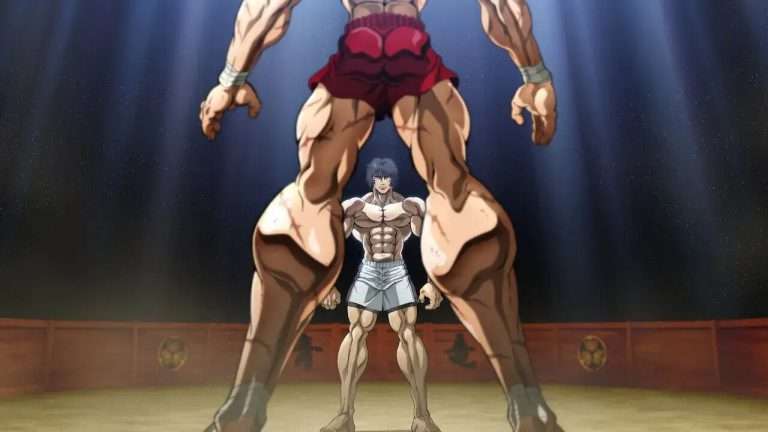
![The Batman [2022] Review: A Delightfully Relentless Crime-Noir Saga Like No Other](https://79468c92.delivery.rocketcdn.me/wp-content/uploads/2022/03/The-Batman-2022-1-768x543.jpg)